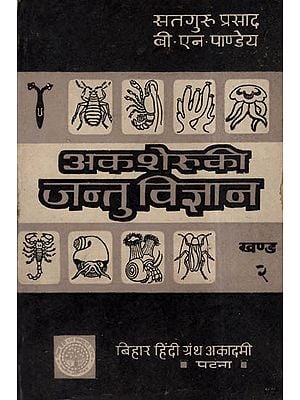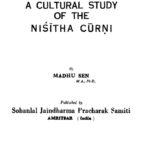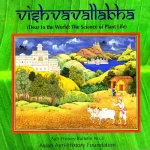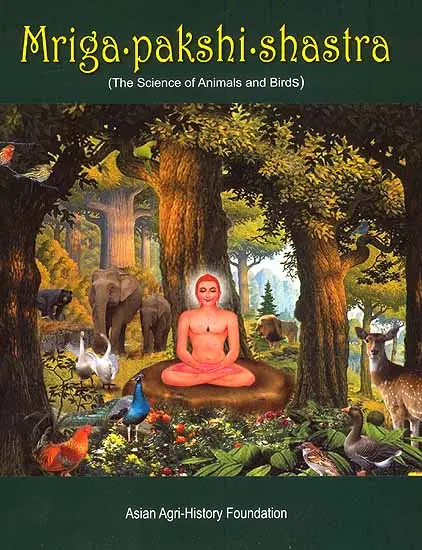
The topic of Zoology is one not much discussed in the context of Traditional Indic Knowledge systems. Though Ayurveda and by extension, Ashvaayurveda is discussed at great length, not much is commonly seen in the sphere of animal taxonomy, or taxidermy for that matter.
Mrga Pakshi Saastra is the medieval tome composed by the Jain scholar Hamsadeva. Presently dated to 1300 AD, it is a voluminous text on antique zoology that remains the most impressive to date. It is often thought that in Classical India, “Knowledge of the physical world was considered only subsidiary and was pursued more seriously only if it contributed to the former [spiritual]. Yet contrary to the common belief that Sanskrit literature consists only of plays, poems, and fictions, besides of course the Vedic and the epic literature, a significant number of texts on science subjects (both pure and applied) have come down to us through ages defying the challenges of time and circumstances.” [1, 289]
Indeed, Indic Civilization is famous (or infamous?) for its scrupulous categorisation and classification of the physical and metaphysical worlds. The world of biology and taxonomy is no exception. Pioneers in Zoology of the Classical Indic Tradition are considered as follows:
- “Shalihotra (c. 1800 BC)
- Palkapya (c. 1000 BCE)
- Bhoja Parmara (c. 1100 AD)
- Sunandaka (prior to 1300 AD)
- Chakra (prior to 1300 AD)
- Hamsadeva (c. 1300 AD)” [1, iii]
“It is in fact a typical mind-set of ancient Indian scholars to analyze and classify objects further and further. Thus in poetics a figure of speech like simile which earlier rhetoricians like Bhamaha and Dandin (7th/8th century AD) define with two or three varieties has as many as twenty-four varieties in Mammata’s (11th century AD) Kavyaprakasha.” [1, 292]
The Jain Panth (religion) is famed for its total commitment to ahimsa (non-violence). However, numerous kings in Rajputana, Odisha, and Dakshinapatha, long gave patronage to this distinct Dharma. Countless scholars and acharyas of tremendous repute have made their impact upon Indic Epistemology. One such figure who stands as a jewel among jewels is Hamsadeva.
Author
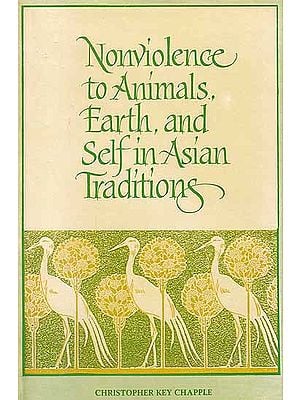
Not much is known to us about the scholar Hamsadeva who composed the Mrga-pakshi-saastra (MPS). Much of what is known—true to the Sanskritic tradition—is found in the introduction (Poorvapithaka) and colophon (Aakhyaapana) of the texts.
“In the introductory portion of the text, the author Hamsadeva, a resident of a village named Mandaka (?), modestly calls himself Mandamati (not very intelligent) and states that it is at the instance of King Shaudadeva of Jinapada (?) that he undertook the task of composing MPS“. [1, 289] In contrast to moorkhapanditas of the present, here is a polymath who not only refuses to call himself one, but actually deprecates his own intelligence. Modesty, after all, is a true sign of wisdom. The colophon is as follows:
“Thus ends the second part of ‘The Science of Animals and Birds’ containing the descriptions of different species and forms of birds composed by Shri Hamsadeva of Mandaka Village.” [1, 286]
Other than these disparate points delineated in passing mention, Hamsadeva stands as a humble personage when his biography should be extravagant given his academic achievement. Arguably the most copious text on Beasts and Birds, this Bestiary stands as a must-have for ornithological enthusiasts.
An interesting point raised by commentators is as follows:
“We should appreciate that these descriptions were recorded when India had an extensive forest cover and the number of animals and birds living was very large compared to the present times. Animals and birds have been hunted mercilessly as a hobby by the Indian kings as well as by the West Asian and European Invaders and colonizers. During this unfortunate period, numbers of species have dwindled drastically, existence of some is threatened, and some have already become extinct.”
“India had experts in zoology at a time when Europe was emerging out of the dark age. There is no doubt that the MPS has by far the most extensive information on animals and birds of medieval India.” [1, 303]
Composition
“As in the case of many other sciences in India, this science too has its rudiments in the Rigveda…In fact, the word veda is derived from the root vid, to know. The Vedas are therefore, repositories of knowledge in the respective branches of learning.“[1, 289]
References to various flora and fauna are replete not only throughout the Rg Veda (I-64-8; III-2-11; III-9-4; VIII-18-17) but also in the Mahabhaaratha and Raamaayana. “Nirukta (a Vedic text on etymology) mentions horses of blue, red, and golden color and donkey, goat, and spotted deer as vehicles of different Vedic deities.” [1, 290]
“The practice of classifying and distinguishing living beings too is very old in India. Hamsadeva’s finer distinctions of the variants of animals and birds has to be traced back to such earlier classifications.
In the famous Purushasukta of Rigveda (X-90), livingbeings are already grouped in three categories:
- Vayavya: Those that can fly in the air:
- Aranya: Those that dwell in the forest; and
- Gramya: Those that reside in villages (human habitats).
Smritis (Manusmriti, I -39-46) and Puranas contain various theories of creation where living beings are broadly classified into four categories:
- Andaja (born from egg): Birds, snakes and so on.
- Jarayuja (born from embryo): Humans, four-legged animals, etc.;
- Swedaja (literally born from sweat): Insects and worms; and
- Udbhija (born from earth by breaking open its crust): Tree, creepers and so on.
[Demonstrative of the original and actual meaning of the term ‘Jaathi’ (race/species) ] Yet another classification is:
• Creatures having two rows of teeth (Ubhayadat):
– Kinnara (Semi-divine beings)
-Vanara (Creatures similar to humans)
– Matsya (Fish)
-Vihangama (Birds)
-Pashu (Cattle and other such animals useful to humans)
-Mriga (Deer and such other forest-dwelling animals)
-Vyala (Wild beasts like lion, tiger, etc.)
• Others (Those that do no have two rows of teeth)
-Small creatures like insects and worms
-Trees, creepers, etc.
Jainas have classified living beings on the basis of the number of sense organs as:
- Trees and plants (Having sense of touch)
- Insects (Having the sense of touch and taste)
- Insects like ants, etc (Having the sense of touch, taste, and smell)
- Honeybees and the like (Having the sense of sight in addition to the above three)
- Mammals (Having the sense of hearing in addition to the above four)
- Humans (Having Mind in addition to the above five)
These primary distinctions must have further led to finer classifications and in MPS we find sub-groups or sub-types even of a single creature.” [1, 290-291].
Indeed the Amarakosha of Amarasimha from the 2nd Century BCE is one such lexicon of zoological import. Also known as Naama-linga-anushaasana, Amarakosha’s magnum opus has multiple sections. “It contains one section called ‘Simhadi varga’ (a section dealing with synonyms of animals and birds, ‘lion’ being the first word in the list). The section in Amarakosha consists of forty-three verses listing synonyms of several animals and birds which form the subject matter of MPS, too. Several commentaries on Amarakosha later explain the derivation of these synonyms to determine the precise meaning of each substantive.” [1, 293]
Given the enormous topic at hand, here is a sample of simhic synonyms (among others):
- “Simha: Derived from the root hims = to kill (as he kills many other forest-animals).
- Mrigendra: A compound of mriga = animal and Indra…
- Panchasya: From pach to extend (as he has extensive jaw).
- Kesarin: One having kesara (mane) explained with ka and the root shri meaning to be scattered; that which is scattered on the head (ka).
- Hari: from root hri = to seize, as he seizes his prey” [1, 294]
Elsewhere, in the Amarakosha, one finds the synonyms of other animals: “ete dwadasha mrigabhedah‘ (these twelve names denote twelve types of deer)” [1, 294]. And so on.
As for the manuscript at hand, the Mrga-pakshi-saastra stands as the foremost text on the topic. One can in fact see the trademark Jain imprint of ahimsa. “Hamsadeva’s love and concern for nature also appears genuine. His very inspiration for composing the present text comes from a feeling of love and appreciation for the beautiful forest creatures leading to a sense of guilt for killing them and thus causing harm to the scheme of nature and that goes very close to what we term today as environmental awareness.” [1, 295]
One also sees the theory of karma embedded in his commentary. Hamsadeva is very observant detailing mating rituals of the animals. However, he draws comparison between their behaviours and that of wicked beings and specimens. “However, there are some, vilest of them, who even after their desire if fulfilled, still have their mind fixed on the enjoyment derived from mating on account of their physical strength. They are a shame on their tribe. If angry, they go to the extent of tearing the female with teeth causing serious wounds. Tigers, bears, mrigadanas, and also monkeys even kill the female in a fit of rage. Such animals differ only in appearance from wicked men, evil spirits, demons, devils, and ghosts.” [1, 298]
Interestingly, he is not self-abnegating in his prescriptions, and notes the difference between an healthy sex-drive and attitude towards sex, and the wicked mentality found in men and women today. “Wild beasts normally have a strong sex-urge but after their desire is fulfilled by uniting with the female, they are gratified and do everything to please the female. God has made them to please the females. Often they are happy with a single union. Many have the urge only occasionally. Those among them are considered the superior type when they act as per the desire of the female in this regard.” [1, 298] Certainly very relevant advice today for many a young lad and [im]mature man (and even some, “modern” women…).
As such, one can see this integral continuum of traditional knowledge even in distinct Indic faiths like Jaina.
Manuscript
In matters pertaining to the manuscript itself, it is considered a very metrical composition. It is written in the celebrated Anushtubh metre, though others are used elsewhere. The author has been complimented by observers for his “rich vocabulary” and “good command on language”—a testament to his education, no doubt. “The Baroda transcript is neatly written in uniform hand. Clarity, legibility, and tidiness are the other striking points. It is prefixed with a table of contents extending over twelve foolscap pages giving and exhaustive, chapter-wise list of animals and birds discussed in the text.” [1, 299] The composition runs approximately 150 pages.
“The author has planned it on the pattern that is more commonly used in Sanskrit prose romances like Banabhatta’s Kadambari, Dandin’s Dashakumaracharita and so on.” [1, 299]
It is divided into a Poorvapithika (Introduction), a Part I on Beasts, and a Part II on Birds. [1, 299]. In the beginning portion, one notes the near unique approach. “It is in the form of a story of King Shaudadeva, describing his hunting expedition, his fascination for the beautiful forest animals and birds in the process, and his feeling of guilt for killing them leading to his quitting the expedition. On his return to the capital he directs his minister Tarananda to find a scholar well-versed in the knowledge about animals and birds in order to write down the same in book form.” [1, 299] This is what sets the stage for the author’s search and expository.
Hamsadeva himself delineates the work as follows. “I have followed the following logical order in this description:
- Mating Season
- Conception
- Period of full growth prior to birth of the young ones
- Description of the young ones and their growth
- Distinction by color
- Distinction by behaviour
- Distinction by species
- The female: nature and characteristics
- Longevity
- Period
- Distinction by trigunas, like satva, etc.” [1, 300]
This method is maintained throughout the text, making it Hamsadeva’s structure scientifically consistent in approach. Indeed, his own hand better explicates what secondary sources cannot:
Selections
“Shri Preaching of Jina is ever victorious
Mriga.pakshi.shastra by Hamsadeva (c.13th century AD)
(The Science of Animals and Birds)
Determination of species and characteristics of various animals and birds of India.” [1, 166]
I. “Victory be to Shaudadeva, the most prominent of the kings, the ruler of a country that he conquered by gallantry, and one who was respected by several tributary kings.
He knew the secrets of the duties of a warrior class enjoined by dharma. He was eagerly engaged in taking care of his people. He knew the soul of poetry…He knew the right time (for the right things). He knew the principles of dharma. He was proficient in all the sciences…May this ruler of Janapura be ever victorious.” [1, 167]
§
II. “717. Thus by the order of King Shauda have I composed this ‘Mriga.Pakshi.Shastra’ (The science of animals and birds) in words (padas; also meaning rays by pun) of orderly descriptions which are as if the sun rays (‘that also have orderly colors’—by pun) that unlock (sun-blooming) lotuses; so that his mind-lotus may bloom (so that he may be pleased).” [1, 286]
§
III. “715. The surroundings like lakes, sea, big or small rivers, mountain-regions, forest trees, earth, sun, wind and so on as also difference in the ambience and daily activity affect the characteristics of animals and birds.”
716. Taking these and such other factors into account experts should gradually learn of their own accord, through observation, their colors, food-habits, gaits, appearance, voice and so on and assess them.” [1, 286]
§
IV. “682. Tittiris [Partridges] have a very sweet voice. White neck, red, black or smoky body color and large wings are typical of them.
“683. Those birds known by the name tittiri can utter worlds like ‘surya’ (sun), ‘hansa’ (swan), etc. They are very calm by nature and can travel long distance in the sky.” [1, 284]
§
V. “34. Due to various permutations and combinations of color and characteristics, lions and other animals can have several subdivisions but I have described only the principal ones.” [1, 169]
§
VI.”1. God created animals like elephants, horses, bullocks, buffaloes, goats and so on with qualities like rajas (energy) and tamas (lethargy).
“2. As they belong to different species and types and as they differ in appearance, similarly Brahma—the lotus-born—the creator, seems to have created birds” [1, 236]
§
Click here to Buy this Book!!!

References:
- Sadhale, Nalini & Y.L. Nene (Eds). Mriga·pakshi·shastra. Secunderabad: Asian Agri-History Foundation. 2008
